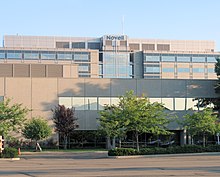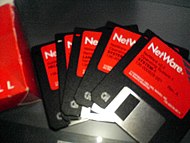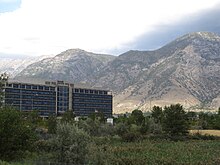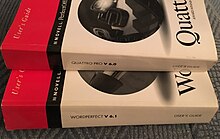
SilverStream Application Server v2.53 serial key or number

SilverStream Application Server v2.53 serial key or number
    |  |  JSRs: Java Specification Requests JSR 53: JavaTM Servlet 2.3 and JavaServer PagesTM 1.2 Specifications 
|
JCP version in use: 2.1
Java Specification Participation Agreement version in use: 1.0
Description:
The next versions of the JavaTM Servlet and JavaServer PagesTM (JSP) specifications.
Please direct comments on this JSR to the Spec Lead(s)
| Specification Leads | |||
| Eduardo Pelegri-Llopart | Sun Microsystems, Inc. | ||
 | |||
| Expert Group | |||
| Adobe Systems Inc. | America Online (AOL) | Apache Software Foundation | |
| Apple Computer, Inc. | Art Technology Group Inc.(ATG) | Avedal, Karl | |
| BEA Systems | Bergsten, Hans | Borland Software Corporation | |
| Developmentor | Ferrier, Nic | Fujitsu Limited | |
| Gemstone Systems, Inc. | Hewlett-Packard | Hunter, Jason | |
| IBM | Intalio, Inc. | InterX PLC | |
| jGuru.com | Lutris Technologies | Macromedia, Inc. | |
| New Atlanta Communications, LLC | Oracle | Persistence Software Inc. | |
| Rydin, Magnus | SAS Institute Inc. | Silverstream Software | |
| Sun Microsystems, Inc. | Sybase | WebGain | |
Original Java Specification Request (JSR)
Identification | Request | Contributions
Submitting Participant: Eduardo Pelegri-Llopart and Danny Coward Java Software, Sun Microsystems, Inc. 901 San Antonio Rd, MS UCUP02-201, Palo Alto, CA 94303 Phone: +1 408 343 1456 and +1 408 343 3551 Email: Eduardo.Pelegrillopart@eng.sun.comDanny.Coward@eng.sun.comOther Participants Endorsing this JSR
Most partners that participated in the definitions of Servlet 2.2 and JSP 1.1 specifications have already expressed interest in participating in the expert group for Servlet 2.3 and JSP 1.2. Partners that are endorsing this JSR include:
| Frank Biederich Adobe | Simeon Simeonov Allaire | Joe Chung ATG |
| Dave Brown BEA | Bob Bickel Bluestone Software | Scott Ferguson Caucho |
| Assaf Arkin Exoffice | Craig R. McClanahan ASF & Jakarta | Elias Bayeh IBM |
| Hans Bergsten Gefion Software | Ethan Henry KL Group | Jason Hunter Author of "Java Servlet Programming" |
| Amit Kishnani Macromedia | Stefano Mazzocchi ASF & Cocoon | Todd Giles Net Objects |
| Bjorn Carlson Netscape | Vince Bonfanti New Atlanta | Julie Basu & Hal Hildebrand Oracle Corp. |
| Tim Lopez Visual Cafe Group (WB Information Systems) | Magnus Stenman Orion App Server | Jon Stevens ASF, Turbine & Clear Ink Corp. |
| Arny Epstein SilverStream | Larry Cable Sun Microsystems |
This JSR requests the creation of the next versions of the Java Servlet and JavaServer Pages specifications. The version numbers tentatively assigned are Servlet 2.3 and JSP 1.2. These two specifications will be part of the Java 2 Enterprise Edition platform.
Since the JavaServer Pages specifications are tightly defined on top of the Java Servlet specifications, we plan to define both specifications in parallel to eliminate discrepancies and confusion, and to reduce development cost. We plan to structure the documentation so that the Java Servlet specification can be used independently of the JavaServer Pages specification,
The Servlet 2.2 and JSP 1.1 specifications are part of the Java 2 Enterprise Edition, version 1.2 (J2EE 1.2) platform. We expect that this proposed specifications will be part of the next release of the J2EE Platform. As with the current versions of the specification, we expect the new versions to be usable on the J2SE platform.
The new Servlet and JSP specifications will add some functionality that was already known to be missing from the current specifications and that was not incorporated due to time constraints or because additional research was needed before determining the correct approach.
In addition, the new Servlet and JSP specifications will incorporate new functionality requested by our parterns and the public, reflecting, in some cases, their quickly evolving needs.
The requirement areas we intend to address include, but are not limited to, the following:
- Better support for localization of applications
- Proper support for inclusion of JSP pages without forcing flushing of buffers
- Support for application events
- Improved debugging and other tool support, taking advantage of JSR-45
- Improved XML support
- Improved tag library support
- Improved JSP authoring support
- Better support for composition of components
- Enabling of WebDAV and WAP requests
In some cases the same solution may address multiple requirements. Also, in some cases, the best response to the requirement may be outside of the specification.
As discussed above, these areas are largely unspecified in Servlet 2.2 and JSP 1.1. Consequently, Web Application authors, server vendors and tool vendors must either ignore these areas or offer support using vendor-specific architectures.
We request the development of a new version of the Servlet specification and a companion new version of the JavaServer Pages specification.
A detailed description of Servlet 2.2 and JSP 1.1 functionality can be found in the respective specification documents, which can be downloaded from the sites at http://java.sun.com/product/servlet/download.html and http://java.sun.com/product/jsp/download.html.
We expect to use the existing packages used by the Servlet 2.2 and JSP 1.1 specifications: javax.servlet, javax.servlet.jsp, and javax.servlet.jsp.tagext.
Security mechanisms must be compatible with the security facilities of J2SE 1.3.
Improved internationalization and locatization capabilities for JSP and Servlets is one of the key goals of this JSR, as noted above.
See 2.8.
In the absence of these new specifications, it is highly likely that Web containers providers will develop container-specific mechanisms to support the facilities listed in section 2.2 of this document. If this occurs it will limit the portability of Servlet and JSP applications and tools.
An analysis of partner needs must be done to determine whether it is possible to target the new specifications exclusively to the Java 2 platform, or if the earlier versions of the specification still need to be considered.
A primary goal is backward compatibility. All applications that use the Servlet 2.2 and JSP 1.2 specifications must be compatible with Servlet 2.3 and JSP 1.2 specifications.
See 2.11 above.
JavaServer Pages Specification, Version 1.1
http://java.sun.com/products/jsp
Java Servlet Specification, Version 2.2
http://java.sun.com/products/servlet
Java 2 Platform, Enterprise Edition Specification Version 1.2
http://java.sun.com/ j2ee/docs.html
The Java 2 Platform, Enterprise Edition Application Programming Model
http://java.sun.com/j2ee/apm
JSR-039, "Java Servlet and JavaServer Pages Performance"
http://www.jcp.org/jsr/detail/39.jsp
JSR-045, "Debugging Support for Other Languages"
http://www.jcp.org/jsr/detail/45.jsp
JSR-052, "A Standard Tag Library for JavaServer Pages" (in preparation)
http://www.jcp.org/jsr/detail/52.jsp
These Servlet 2.3 and JSP 1.2 specifications will be based on the current Servlet 2.2 and JSP 1.1 specifications. The Application Programming Model work will be used to ground the new designs. The J2EE documents provide context for the use of Servlets and JSP within the J2EE platform.
We expect to take advantage of the experience gained from a number of projects, including several that are represented in the endorsement list.
JSR-052, "A Standard Tag Library for JavaServer Pages" requests the creation of a standard JSP tag library; that specification effort will have a symbiotic relationship with this one. Similarly, we expect to take advantage of JSR-045 "Debugging Support for Other Languages" to provide improved debugging support for JSP. Finally, we expect to start getting some feedback from and input into JSR-039, "Java Servlet and JavaServer Pages Performance".
Novell
 | |
 Former headquarters tower in Provo, Utah | |
| Public (until 2011) Division | |
| Traded as | NASDAQ: NOVL |
|---|---|
| Industry | Computer software |
| Fate | Acquired by The Attachmate Group, then by Micro Focus International |
| Predecessor | Excelan |
| Founded | 1979; 41 years ago (1979) Orem, Utah, United States |
| Defunct | November 2014 (2014-11) |
| Headquarters | , |
| Products | |
| 4,000[1] (2008) | |
| Parent | Micro Focus International |
| Website | www.novell.com |
Novell, Inc./noʊˈvɛl/ was an American software and services company headquartered in Provo, Utah. Its most significant product was the multi-platformnetwork operating system known as Novell NetWare, which became the dominant form of personal computer networking during the second half of the 1980s and first half of the 1990s. At its high point, NetWare had a 63 percent share of the market for network operating systems,[2] and by the early 1990s there were over half a million NetWare-based networks installed worldwide.[3] Novell technology contributed to the emergence of local area networks, which displaced the dominant mainframe computing model and changed computing worldwide. Novell became instrumental in making Utah Valley a focus for technology and software development.
Under the leadership of Ray Noorda, during the early- to mid-1990s Novell attempted to compete directly with Microsoft by acquiring Digital Research,[4][5][6]Unix System Laboratories,[7]WordPerfect, and the Quattro Pro division of Borland. These moves did not work out, and NetWare began losing market share once Microsoft bundled network services with the Windows NT operating system and its successors. Despite new products such as Novell Directory Services and GroupWise, Novell entered a long period of decline. Eventually Novell acquired SUSE Linux and attempted to refocus its technology base.
The company was an independent corporate entity until it was acquired as a wholly owned subsidiary by The Attachmate Group in 2011, which in turn was acquired in 2014 by Micro Focus International. Novell products and technologies are now integrated within various Micro Focus divisions.
History[edit]
Origins as a hardware company[edit]

The company began in 1979[8] in Orem, Utah as Novell Data Systems Inc. (NDSI), a hardware manufacturer producing CP/M-based systems. Former Eyring Research Institute (ERI) employee Dennis Fairclough was a member of the original team. It was co-founded by George Canova, Darin Field, and Jack Davis.[citation needed] Victor V. Vurpillat brought the deal to Pete Musser, chairman of the board of Safeguard Scientifics, Inc., who provided the seed funding.
The company initially did not do well. The microcomputer produced by the company was comparatively weak against performance by competitors.
In order to compete on systems sales Novell Data Systems planned a program to link more than one microcomputer to operate together. The former ERI employees Drew Major, Dale Neibaur and Kyle Powell, known as the SuperSet Software group, were hired to this task.
At ERI, Fairclough, Major, Neibaur and Powell had worked on government contracts for the Intelligent Systems Technology Project, and thereby gained an important insight into the ARPANET and related technologies, ideas which would become crucial to the foundation of Novell.

The Safeguard board then ordered Musser to shut Novell down. Musser contacted two Safeguard investors and investment bankers, Barry Rubenstein and Fred Dolin, who guaranteed to raise the necessary funds to continue the business as a software company as Novell Data Systems' networking program could work on computers from other companies.
Davis left Novell Data Systems in November 1981, followed by Canova in March 1982.
Rubinstein and Dolin, along with Jack Messman, interviewed and hired Raymond Noorda. The required funding was obtained through a rights offering to Safeguard shareholders, managed by the Cleveland brokerage house, Prescott, Ball and Turben, and guaranteed by Rubenstein and Dolin.
Major, Neibaur and Powell continued to support Novell through their SuperSet Software Group.
In January 1983, the company's name was shortened to "Novell, Inc.", and Noorda became the head of the firm. Later that same year, the company introduced its most significant product, the multi-platformnetwork operating system (NOS), Novell NetWare.
NetWare[edit]



The first Novell product was a proprietary hardware server based on the Motorola 68000CPU supporting six MUX ports per board for a maximum of four boards per server using a star topology with twisted pair cabling. A network interface card (NIC) was developed for the IBM PC industry standard architecture (ISA) bus. The server was using the first network operating system (NOS) called ShareNet (aka S-Net). Later, ShareNet was ported to run on the Intel platform and renamed NetWare. The first commercial release of NetWare was version 1.5.
Novell based its network protocol on Xerox Network Systems (XNS), and created its own standards from IDP and SPP, which it named Internetwork Packet Exchange (IPX) and Sequenced Packet Exchange (SPX). File and print services ran on the NetWare Core Protocol (NCP) over IPX, as did Routing Information Protocol (RIP) and Service Advertising Protocol (SAP).
Novell had acquired Kanwal Rekhi's company Excelan in 1989, which manufactured smart Ethernet cards and commercialized the Internet protocol TCP/IP, solidifying Novell's presence in these niche areas.
Novell did extremely well throughout the 1980s. It aggressively expanded its market share by selling its expensive Ethernet cards at cost. By 1990, Novell had an almost monopolistic position in NOS for any business requiring a network.
With this market leadership, Novell began to acquire and build services on top of its NetWare operating platform. These services extended NetWare's capabilities with such products as NetWare for SAA, Novell multi-protocol router, GroupWise and BorderManager.
Beyond NetWare[edit]
However, Novell was also diversifying, moving away from its smaller users to target large corporations, although the company later attempted to refocus with NetWare for Small Business. It reduced investment in research and was slow to improve the product administration tools, although it was helped by the fact its products typically needed little "tweaking" — they just ran.
Under Noorda, Novell made a series of acquisitions interpreted by many to be a challenge to Microsoft.[9][10]
Novell acquired Digital Research for US$80 million in June 1991.[4][5][10][6] NetWare used DR DOS as a boot loader and maintenance platform, and Novell intended to extend its desktop presence by integrating networking into DR DOS and providing an alternative to Microsoft's Windows. At first, the idea was to provide a graphical environment based on Digital Research's GEM, but Novell's legal department rejected this due to apprehension of a possible legal response from Apple, so the company went directly to Apple starting Star Trek in February 1992, a project to run an x86-port of their Mac OS on top of a multitasking DR DOS.

On the server side, after their initial October 1991 Univel initiative[11] Novell bought Unix System Laboratories (USL) from AT&T Corporation in 1993,[7][12] acquiring rights to the Unix operating system for their UnixWare.
One of Novell's major innovations at the time was Novell Directory Services (NDS), now known as eDirectory. Introduced with NetWare 4.0 in 1993, NDS replaced the old Bindery server and user management technology employed by NetWare 3.x and earlier.
In 1994 Novell announced plans to develop a SuperNOS based on NetWare 4.1 and UnixWare 2.0.


In 1994, Novell also bought WordPerfect Corporation, as well as acquiring Quattro Pro from Borland.
As Novell faced new competition, Noorda was replaced by Robert Frankenberg in April 1994.[13] The Noorda-era acquisitions were short-lived:
Novell had already abandoned Digital Research's Multiuser DOS in 1992. The three former Master Value Added Resellers (VARs) DataPac Australasia, Concurrent Controls[14] and Intelligent Micro Software[15] could license the source code to take over and continue independent development of their derivations in 1994.
Digital Research's FlexOS had been licensed to IBM for their 4690 OS in 1993 and was also utilized for the in-house development of Novell's Embedded Systems Technology (NEST), but was sold off to Integrated Systems, Inc. (ISI) for US$3 million in July 1994. The deal comprised a direct payment of half this sum as well as shares representing 2% of the company.
Novell also abandoned their Corsair desktop project and in late 1994 transferred some components to Caldera, a startup funded by Noorda's Canopy Group.
In 1995, Novell assigned portions of its Unix business to the Santa Cruz Operation.[16]
WordPerfect and Quattro Pro were sold to Corel in January 1996.
Novell DOS (and all former DR DOS versions including StarTrek, PalmDOS and DOS Plus) as well as other remaining Digital Research assets (like GEM and the CP/M- and MP/M-based operating systems, programming languages, tools and technologies) were sold to Caldera on 23 July 1996. Personal NetWare had been abandoned at Novell in 1995 but was licensed to Caldera in binary form only. The deal consisted of a direct payment of US$400,000 as well as percentual royalties for any revenues derived from those assets to Novell.
In January 1997, Novell's NEST initiative was abandoned as well.[17][18][19]
In 1996, the company began a move into Internet-enabled products, replacing reliance on the proprietary IPX protocol in favor of a native TCP/IP stack. The move was accelerated when Eric Schmidt became CEO in 1997, succeeding Frankenberg, who had resigned the previous year; Christopher Stone was brought in as senior vice president of strategy and corporate development, reporting to Schmidt.
The result was NetWare 5.0, released in October 1998, which leveraged and built upon eDirectory and introduced new functions, such as Novell Cluster Services (NCS, a replacement for SFT-III) and Novell Storage Services (NSS), a replacement for the traditional Turbo FAT filesystem used by earlier versions of NetWare. While NetWare 5.0 introduced native TCP/IP support into the NOS, IPX was still supported, allowing for smooth transitions between environments and avoiding the "forklift upgrades" frequently required by competing environments. Similarly, the traditional Turbo FAT file system remained a supported option.
Decline[edit]
The inclusion of networking as a core system component in all mainstream PC operating systems after 1995 led to a steep decline in Novell's market share. Unlike Windows 3.1 and its predecessors, Windows 95, Linux, and OS/2 all included network functionality which greatly reduced demand for third-party products in this segment.

Novell's decline and loss of market share accelerated under Eric Schmidt's leadership, with Novell experiencing an across-the-board decline in sales and purchases of NetWare and a drop in share price from US$40.00/share to US$7.00/share. Analysts commented that the primary reason for Novell's demise was linked to its channel strategy and mismanagement of channel partners under Schmidt.[20][21][22]
Under Ray Noorda's leadership, Novell provided upgrades to resellers and customers in the same packaging as a newly purchased copy of NetWare, but at one third the cost, which created a "gray market" that allowed NetWare resellers to sell upgrades as newly purchased NetWare versions at full price periodically, which Novell intentionally did not track. Ray Noorda commented to several analysts that he devised this strategy to allow front line resellers to "punch through" the distributors like Tech Data and Ingram and acquire NetWare versions at a discounted rate, as Novell "looked the other way"; this helped fund the salaries of Novell Field Support Technicians, who for the most part were employees who worked for the front line resellers as Novell CNE (Certified NetWare Engineers).
Noorda commented that this strategy was one he learned as an executive at General Electric when competing against imported home appliances: allow the resellers to "make more money off your product than someone else's". Eric Schmidt embarked on a disastrous strategy to remove the upgrades as whole box products without understanding Novell's channel dynamics, then directed Novell's general counsel to initiate litigation against a large number of Novell resellers who were routinely selling upgrades as newly purchased NetWare versions.
Although this move bolstered Novell's revenue numbers for several quarters, Novell's channels subsequently collapsed with the majority of Novell's resellers dropping NetWare for fear of litigation.[23][24][25][26]

By 1999, Novell had lost its dominant market position, and was continually being out-marketed by Microsoft as resellers dropped NetWare, allowing Microsoft to gain access to corporate data centers by bypassing technical staff and selling directly to corporate executives. Most resellers then re-certified their Novell CNE employees— the field support technicians who were Novell's primary contact in the field with direct customers—as Microsoft MCSE technicians, and were encouraged[by whom?] to position NetWare as inferior to Windows 2000 features such as Group Policy and Microsoft's GUI, which was considered to be more modern than the character-based Novell interfaces. With falling revenue, the company focused on net services and platform interoperability. Products such as eDirectory and GroupWise were made multi-platform.
In October 2000, Novell released a new product, dubbed "DirXML", which was designed to synchronize data—typically user information—between disparate directory and database systems. This product leveraged the speed and functionality of eDirectory to store information, and would later become the Novell Identity Manager, forming the foundation of a core product set within Novell.
Cambridge Technology Partners[edit]

In July 2001, Novell acquired the consulting company Cambridge Technology Partners (CTP), founded in Cambridge, Massachusetts by John J. Donovan, to expand offerings into services. Novell felt that the ability to offer solutions (a combination of software and services) was key to satisfying customer demand. The merger was apparently against the firm's software development culture, and the finance personnel at the firm also recommended against it.
The CEO of CTP, Jack Messman, engineered the merger using his position as a board member of Novell since its inception, and as part of the deal became CEO of Novell. Chris Stone, who had left in 1999, was rehired as vice chairman to set the course for Novell's strategy into open source and enterprise Linux. With the acquisition of CTP, Novell moved its headquarters to Massachusetts.[27]
In July 2002, Novell acquired SilverStream Software, a leader in web services-oriented applications, but a laggard in the marketplace. Renamed to Novell exteNd, the platform comprised XML and web service tools based on Java EE.
Linux[edit]

In August 2003, Novell acquired Ximian, a developer of open source Linux applications (Evolution, Red Carpet and Mono). This acquisition signaled Novell's plans to move its collective product set onto a Linux kernel.
In November 2003, Novell acquired Linux OS developer SuSE, which led to a major shift of power in Linux distributions. IBM also invested US$50 million to show support of the SuSE acquisition.
In mid-2003, Novell released "Novell Enterprise Linux Services" (NNLS), which ported some of the services traditionally associated with NetWare to SUSE Linux Enterprise Server (SLES) version 8.
In November 2004, Novell released the Linux-based enterprise desktop Novell Linux Desktop 9, based on Ximian Desktop and SUSE Linux Professional 9.1. This was Novell's first attempt to get into the enterprise desktop market.
The successor product to NetWare, Open Enterprise Server, was released in March 2005. OES offers all the services previously hosted by NetWare 6.5, and added the choice of delivering those services using either a NetWare 6.5 or SUSE Linux Enterprise Server 9 kernel. The release was aimed to persuade NetWare customers to move to Linux.
In August 2005, Novell created the openSUSE project, based on SUSE Professional.[28] openSUSE can be downloaded freely and is also available as boxed retail product.[29]
Stagnation[edit]

From 2003 through 2005 Novell released many products across its portfolio, with the intention of arresting falling market share and to move away from dependencies on other Novell products, but the launches were not as successful as Novell had hoped. In late 2004, Chris Stone again left the company, after an apparent control issue with then CEO Jack Messman.[30] In an effort to cut costs, Novell announced a round of layoffs in late 2005. While revenue from its Linux business continued to grow, the growth was not fast enough to offset the decrease in revenue of NetWare. While the company's revenue was not falling rapidly, it wasn't growing, either. Lack of clear direction or effective management meant that Novell took longer than expected to complete its restructuring.
In June 2006, chief executive Jack Messman and chief finance officer Joseph Tibbetts were fired, with Ronald Hovsepian, Novell's president and chief operating officer, appointed chief executive, and Dana Russell, vice-president of finance and corporate controller, appointed interim CFO.
"Your Linux is Ready"[edit]

In August 2006, Novell released the SUSE Linux Enterprise 10 (SLE 10) series. SUSE Linux Enterprise Server was the first enterprise class Linux server to offer virtualization based on the Xen hypervisor. SUSE Linux Enterprise Desktop (popularly known as SLED) featured a new user-friendly GUI and XGL-based 3D display capabilities. The release of SLE 10 was marketed with the phrase "Your Linux is Ready", meant to convey that Novell's Linux offerings were ready for the enterprise. In late September 2006 Novell announced a real-time version of SLES called "SUSE Linux Enterprise Real Time" (SLERT), based on technology from Concurrent Computer Corporation.
Agreement with Microsoft[edit]
In 2004, Novell sued Microsoft, asserting it had engaged in antitrust violations regarding Novell's WordPerfect business in 1994 through 1996. Novell's lawsuit was subsequently dismissed by the United States District Court in July 2012 after it concluded that the claims were without merit.[31]
On 2 November 2006, the two companies announced a joint collaboration agreement, including coverage of their respective products for each other's customers.[32][33] They also promised to work more closely to improve compatibility of software, setting up a joint research facility. Executives of both companies expressed the hope that such cooperation would lead to better compatibility between Microsoft Office and OpenOffice.org and better virtualization techniques.
Microsoft CEO Steve Ballmer said of the deal, "This set of agreements will really help bridge the divide between open-source and proprietary source software."[34] The deal involved upfront payment of US$348 million from Microsoft to Novell for patent cooperation and SLES subscription. Additionally, Microsoft agreed to spend around US$46 million yearly, over the next 5 years, for marketing and selling a combined SLES/Windows Server offering and related virtualization solutions, while Novell paid at least US$40 million yearly to Microsoft, in the same period.[35]
One of the first results of this partnership was Novell adapting the OpenXML/ODF Translator[36] for use in OpenOffice.org.[37]
Microsoft released two public covenants not to sue users of the open source Moonlight runtime—a workalike for the Microsoft Silverlight rich media platform—for patent infringement. One condition common to each covenant was that no Moonlight implementation be released under the GPLv3 free software license.[38][39]
Reaction of FOSS community[edit]

Initial reaction from members of the FOSS community over the patent protection was mostly critical, with expressions of concern that Novell had "sold out" and doubt that the GNU GPL would allow distribution of code, including the Linux kernel, under this exclusive agreement.[40][41][42]
In a letter to the FOSS development community on 9 November 2006, Bradley M. Kuhn, CTO of the Software Freedom Law Center (SFLC), described the agreement as "worse than useless".[43] In a separate development, the chairman of the SFLC, Eben Moglen, reported that Novell had offered cooperation with the SFLC to permit a confidential audit to determine the compliance of the agreement with the GPL (version 2).[44]Richard Stallman, founder of the Free Software Foundation, said in November 2006 that changes coming with version 3 of the GPL would preclude such deals.[45] When the final revision of the third version of the GPL license was decided, the deal between Microsoft and Novell was grandfathered in. A clause within GPLv3 allows companies to distribute GPLv3 software even if they have made such patent partnerships in the past, as long as the partnership deal was made before 28 March 2007 (GPLv3 Section 11 paragraph 7[46]).
On 12 November 2006, the Samba team expressed strong disapproval of the announcement[clarification needed] and asked Novell to reconsider.[47] The team included an employee of Novell, Jeremy Allison, who confirmed in a comment on Slashdot that the statement was agreed on by all members of the team,[48] and later quit his job at Novell in protest.[49]
In early February 2007, Reuters reported that the Free Software Foundation had announced that it was reviewing Novell's right to sell Linux versions, and was considering banning Novell from selling Linux.[50] However, spokesman Eben Moglen later said that he was quoted out of context,[51] and was only noting that GPL version 3 would be designed to block similar deals in the future.
Intelligent workload management[edit]
In December 2009, Novell announced its intention to lead the market in intelligent workload management, with products designed to manage diverse workloads in a heterogeneous data center.[52]
Acquisition by The Attachmate Group[edit]

Novell had long been rumored to be a target for acquisition by a variety of other companies. In March 2010, Elliott Associates, L.P., an institutional investor with approximately 8.5% stock ownership of Novell, offered to acquire the company for US$5.75 per share in cash, or US$1 billion.[53] The company declined the offer, saying that the proposal was inadequate and that it undervalued the company's franchise and growth prospects.[54]
Novell announced in November 2010 that it had agreed to be acquired by The Attachmate Group for US$2.2 billion, and planned to operate Novell as two units, one being SUSE. As part of the deal, 882 patents owned by Novell were sold to CPTN Holdings LLC, a consortium of companies led by Microsoft and including Apple, EMC, and Oracle.[55][56][57] According to Novell's SEC filing, the patents "relate primarily to enterprise-level computer systems management software, enterprise-level file management and collaboration software in addition to patents relevant to our identity and security management business, although it is possible that certain of such issued patents and patent applications read on a range of different software products".[58][59] The Attachmate Group expressed in advance of the deal closing that there would no change to the relationship between the SUSE business and the openSUSE project.[60] The merger completed in April 2011, with US$6.10 per share in cash being paid to acquire Novell. Novell became a wholly owned subsidiary of The Attachmate Group.
Concurrent with the closing of the acquisition, some of Novell's products and brands were transferred to another of the Attachmate Group business units, NetIQ, and the SUSE Linux brand was spun off as its own business unit. The fourth business unit, Attachmate, was not directly affected by the acquisition.
CPTN Holdings agreement[edit]
Immediately prior to merger being finalized, Novell completed the patent sale to CPTN Holdings for US$450 million.[61] The U.S. Department of Justice announced that, as originally proposed, the deal with CPTN would jeopardize the ability of open source software, such as Linux, to continue to innovate and compete in the development and distribution of server, desktop, and mobile operating systems, middleware, and virtualization products; to address the department's antitrust concerns, CPTN and its owners had altered their original agreement:
- All of the Novell patents would be acquired subject to the GPLv2 open source license, and the Open Invention Network (OIN) license
- CPTN does not have the right to limit which of the patents, if any, are available under the OIN license
- Neither CPTN nor its owners will make any statement or take any action with the purpose of influencing or encouraging either Novell or Attachmate Group to modify which of the patents are available under the OIN license
2011 layoffs[edit]
In April 2011, The Attachmate Group announced layoffs for the Novell workforce, including hundreds of employees from their ProvoUtah Valley center,[62] raising questions about the future of some open source projects such as Mono.[63][64]
Micro Focus acquisition[edit]
In September 2014, mainframe software company Micro Focus announced it was buying The Attachmate Group, including Novell, for US$1.2 billion.[65]
Acquisitions[edit]

- Santa Clara Systems, Inc. (1986) for storage subsystems, network adapters, PCs[66]
- Cache Data Product (1986)
- CXI (1987) for micro-to-mainframe software[66]
- SoftCraft (1987) for Btrieve database and programming tools[67][66]
- Indixy Software (1988/1990) for e-mail and message handling[66]
- Excelan (1989) for TCP/IP, Unix, Mac, DEC VMS connectivity products[66]
- Digital Research for US$80 million (1991) for PC operating system software (DR DOS etc.)[4][5][6]
- International Business Software Ltd. (1992)
- Serius (1993)
- Unix System Laboratories (1993)[7]
- WordPerfect Corporation (1994)
- Quattro Pro (Borland) (1994)
- Netoria (1999)
- Ukiah Software (1999)
- JustOn (1999)
- PGSoft (2000)[68]
- Novetrix (2001)[69][70]
- Cambridge Technology Partners (2001)
- Callisto Software, Inc. (2001)
- SilverStream Software (2002)
- Ximian (2003)
- SUSE (2003)
- Salmon (2004)
- Tally System (2005)
- Immunix (2005)
- e-Security, Inc (2006)
- RedMojo (2007)
- Senforce[71] (2007)
- PlateSpin (2008)
- SiteScape (2008)
- Fortefi (2008) for Command Control and Compliance Auditor
- Managed Objects, Inc. (2008)
Certification[edit]
Novell was one of the first computer companies to provide proficiency certification for users of its products. They include:
Products[edit]

Products marketed by Novell include:
- Novell iPrint Appliance a network print server supports mobility on printing, a user can print from any device from anywhere to anywhere in any corner of the world
- BorderManager provides Internet access controls, secure VPN, and firewall services on NetWare
- Business Continuity Clustering automates the configuration and management of high-availability, clustered servers
- Client for Linux gives Linux desktop users access to NetWare and Open Enterprise Server services and applications
- Client for Windows gives Microsoft Windows users access to NetWare and Open Enterprise Server services and applications
- Cluster Services for Open Enterprise Server simplifies resource management on a Storage Area Network (SAN) and enables high-availability
- Data Synchronizer keeps applications and mobile devices constantly in sync, and offers connectors for popular CRM systems
- Endpoint Lifecycle Management Suite manages applications, devices, and servers over their life-cycle
- Endpoint Protection Suite Endpoint Protection Suite
- File Management Suite integrates three Novell products that work together to discover, analyze, provision, relocate and optimize file storage based on business policies
- File Reporter examines and reports on terabytes of unstructured file data, and forecasts storage growth
- GroupWise provides secure e-mail, calendaring, contact management, and task management with mobile synchronization
- Ifolder stores files for secure accessibility online and offline, across systems and on the web
- NFS Gateway for NetWare 6.5 enables NetWare 6.5 servers to access UNIX and Linux NFS-exported file-systems
- Open Enterprise Server offers NetWare services like centralized server management and secure file storage, running on SUSE Linux Enterprise Server
- Open Workgroup Suite provides a low-cost alternative to Microsoft Professional Desktop Platform; features workgroup services and collaboration tools
- Open Workgroup Suite for Small Business offers a full-featured desktop-to-server solution running on Linux, designed to support small business users
- Service Desk streamlines and automates the provision of IT services. An OEM product from LiveTime Software.[72]
- Storage Manager provides automated management of file storage for users and work groups
- Total Endpoint Management Suite efficiently balances security and productivity across an entire enterprise
- Vibe provides secure team collaboration with document management and workflow features that can replace existing intranet systems
- ZENworks, a software suite supporting the management of computer systems
- ZENworks Application Virtualization allows the packaging and deployment of virtualized applications with predictive application-streaming that delivers apps based on user behavior
- ZENworks Asset Management provides reports on hardware and software, integrating licensing, installation, and usage data
- ZENworks Configuration Management provides automated endpoint-management, software distribution, user support, and accelerated Windows 7 migration
- ZENworks Endpoint Security Management[73][74] (ZES) - provides identity-based protection for client endpoints like laptops, smart phones, and thumb drives; offers driver-level firewall protection
- ZENworks Full Disk Encryption protects data on laptops and desktops
- ZENworks Handheld Management allows securing stolen handhelds, protects user data, enforces password policies, and locks out lost or stolen devices
- ZENworks Linux Management facilitates the control of Linux desktops and servers, using policy-driven automation to deploy, manage and maintain Linux resources
- ZENworks Mobile Management secures and manages mobile devices, both corporate-issued and personal (BYOD)
- ZENworks Patch Management automates patch assessment, monitoring and remediation; monitors patch compliance to detect security vulnerabilities
- ZENworks Virtual Appliance provides self-contained plug-and-play configuration management, asset management and patch management
See also[edit]

References[edit]
It supports filtering searching highlighting and many other useful features. 00 for future development of this software Self Extracting EXE file 397 K Donate 1. Aug 28 2019 Creating Split Zip File Imagine you want to store the Zip archive on a file hosting service that has a file size upload limit of 1GB and your Zip archive is 5GB. Simply type in your text or use any common Windows cut copy or paste method. zip To unzip a zip file named master.
.What’s New in the SilverStream Application Server v2.53 serial key or number?
Screen Shot

System Requirements for SilverStream Application Server v2.53 serial key or number
- First, download the SilverStream Application Server v2.53 serial key or number
-
You can download its setup from given links:


